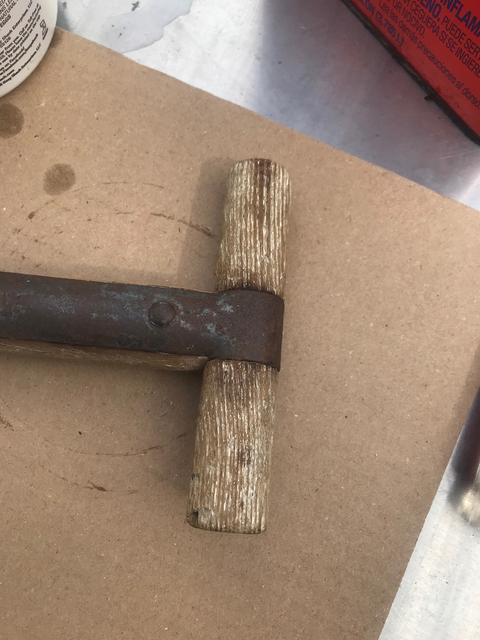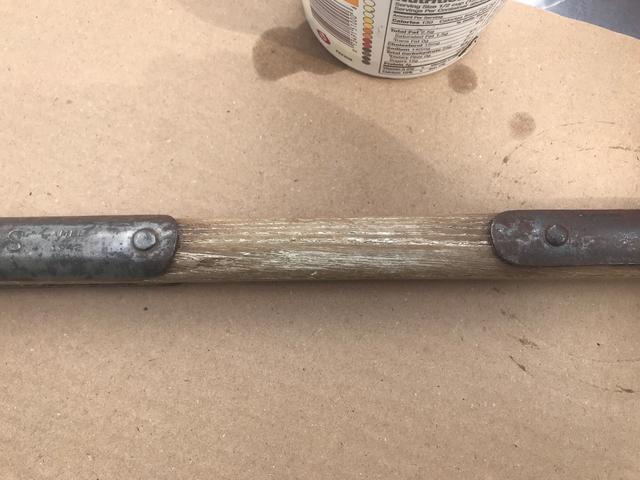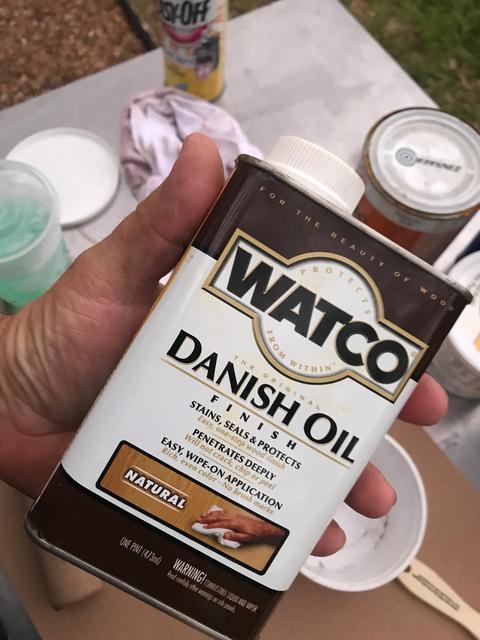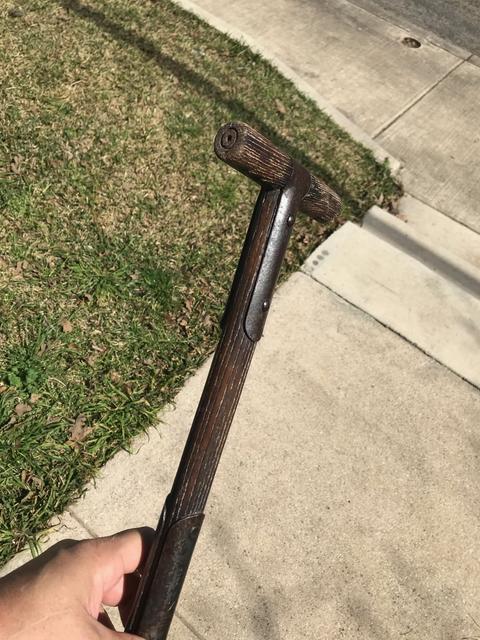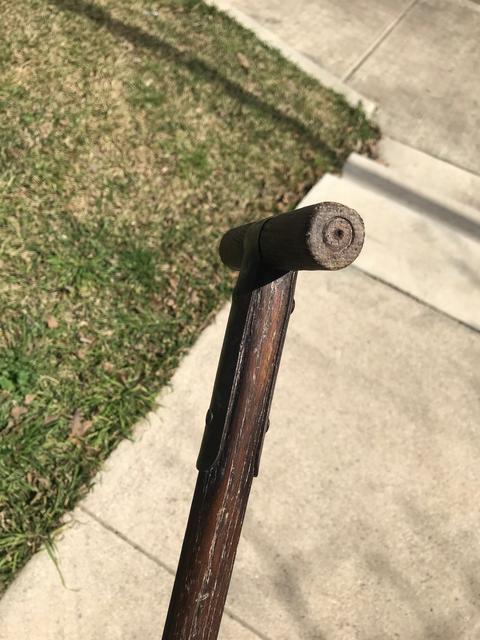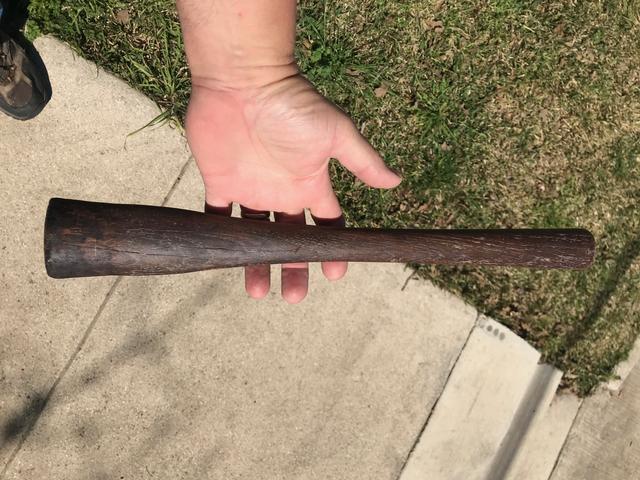Here's a little tutorial on salvaging pioneer kit. We are beginning with some very old stuff (both, circa 1942). These are entrenching tools (part of an individual soldier's kit) and as you can imagine, they've been through hell and high water. Obviously, these aren't exactly the kind of tools you'd find on your military vehicle but the principles for restoring these to a far better condition than when found are the same. My goal is to make these tools look as though someone really appreciated their value for every year of their life despite the fact that they haven't been cared for, or cared about for a very long time.
I caught a lucky break and found this tee-handled entrenching shovel (Model M1910) at a rummage sale. It was accompanied by a Model M1910 pick mattock. Both were rather sloppily coated in white paint but they were intact and showed no signs of abuse. This was a huge bonus because paint means protection. Everyone else passed them up because they were just plain ugly. Judging by the quality of the paint, even in its obviously advanced years, I'd have to say it was lead-based and not the kind of paint you'd necessarily want to remove with an abrasive or a wire wheel, right? In fact, they looked like they had been coated in yogurt, and so everyone walked right past them. I didn't.
I went with a citrus paint remover which did a very nice job removing the paint but it required several applications. A less aggressive remover is sometimes better in that it allows for more control and if you have read my other posts, you know how I prefer to sneak up on things.
Here we see the white paint still present on the lower half with citrus paint remover on the upper half. Citrus paint remover is very temperature sensitive. If it's cool, it doesn't work very aggressively and it will not put so much as a scratch on CARC or, what I presume to be epoxy based paint on those M416 fenders.
As a point of interest, the hardware on this shovel was painted with no evidence of green paint to be found anywhere on the wood bits and the issue of whether wood on e-tools and pioneer tools should be painted is a long-standing argument, no matter what era you're talking about. I've been collecting long enough I have seen every original combination; painted, unpainted, partially painted. Some times the manual will specify paint but sometimes, that depends upon when the manual was written eh?

Final application on the upper half is dealt with by a quick scraping of the few big chunks of paint and then giving what remains a rub down with steel wool, paint remover and all. That is followed by a thorough rinse, being sure to get all the stuff out of the corners with a tooth brush. Yes, the wood gets a little wet. We'll deal with that in a minute.

I'll deal with the rust issues later, probably with a visit to the blast cabinet. Everyone has their own favorite method of dealing with rust so I won't go into that here. Obviously, the rust has to be stopped.
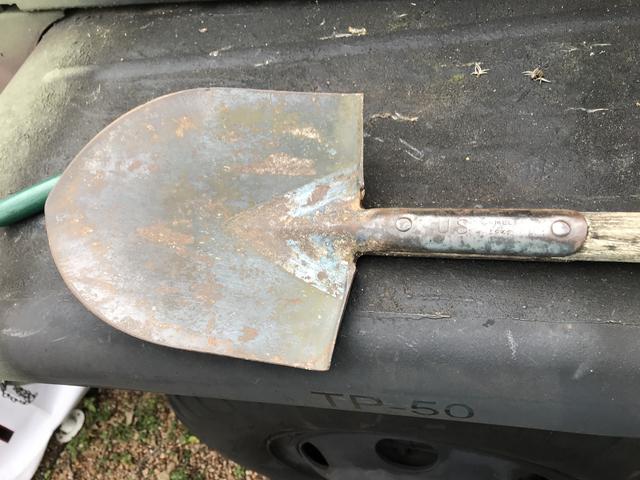
Ames has been supplying shovels to our military since the civil war (and other governments as well) to present day, so don't be surprised if you find that your modern pioneer shovel has been manufactured by Ames. Some interesting history in the link below. Open the page and then reload the page to get rid of their annoyingly persistent subscription bubble.
http://www.ames.com/about/about-ames/

Here, we can see that the wood is still a bit damp around the hardware. This is dry enough to go to the next step, which is a thorough application of Easy Off oven cleaner. Apply a good coating and then let it sit in an open air environment...and NOT inside your home. The oven cleaner will break down the oxidized wood and just a bit more paint. Oven cleaner also does better when the chemical and your work's surface are not cold. Follow up with another thorough rinse while scrubbing it down with a sink sponge (the kind with a 3M scotch-brite pad on one side). The scotch-brite pad does a good job of removing the oxidized wood without being too aggressive and the sponge side ensures you'll get nice even pressure on the wood. Don't forget to get everything out of the corners with a tooth brush. Once you're satisfied, dry it off as best you can with paper towels. What is clean enough? Well, if your paper towel is becoming brown, you still have more work to do. After drying, the wood is going to be damp. No worries. The next part is easy.
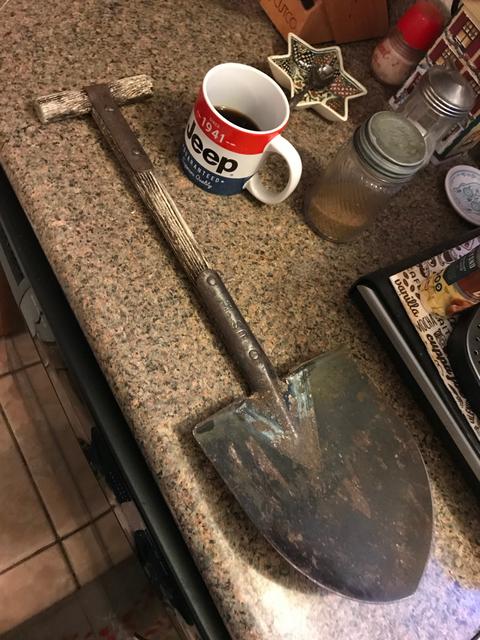
I just put the oven on 'Warm' (which is about 250 degrees) stick that thing in there and after a little bit, this is the result. This goes a lot easier when your wife is not around to defend her oven. For larger tools that won't fit in an oven, you can use your engine compartment as an oven (hood down and engine running of course) but make sure no one drives off with a loose tool under there! The point of this exercise is, you want to heat up that hardware and drive that moisture out from beneath it.

This wood will receive a very light sanding with some fine sandpaper. The goal is to reduce the high points in the grain just a little bit but not to perfectly smooth. Remember the goal? This particular wood has been around since 1942...maybe longer and we are not making fine furniture here. If you sand it perfectly smooth you'll have removed far too much wood. That wood is what gives this tool it's character and there is nothing to be gained by making it look brand new. Whatever sanding you elect to do, sand only WITH the grain, not across the grain of the wood.
Obviously, if you're working with full size tools you can afford to be a bit more aggressive with your sanding simply because there is more wood there and those tools likely don't have the same kind of collectable value as the smaller entrenching tools.

This is coming along very nicely. It looks far better than when I began.

This Plumb brand pick mattock (also 1942) received the same treatment.


More to come.

